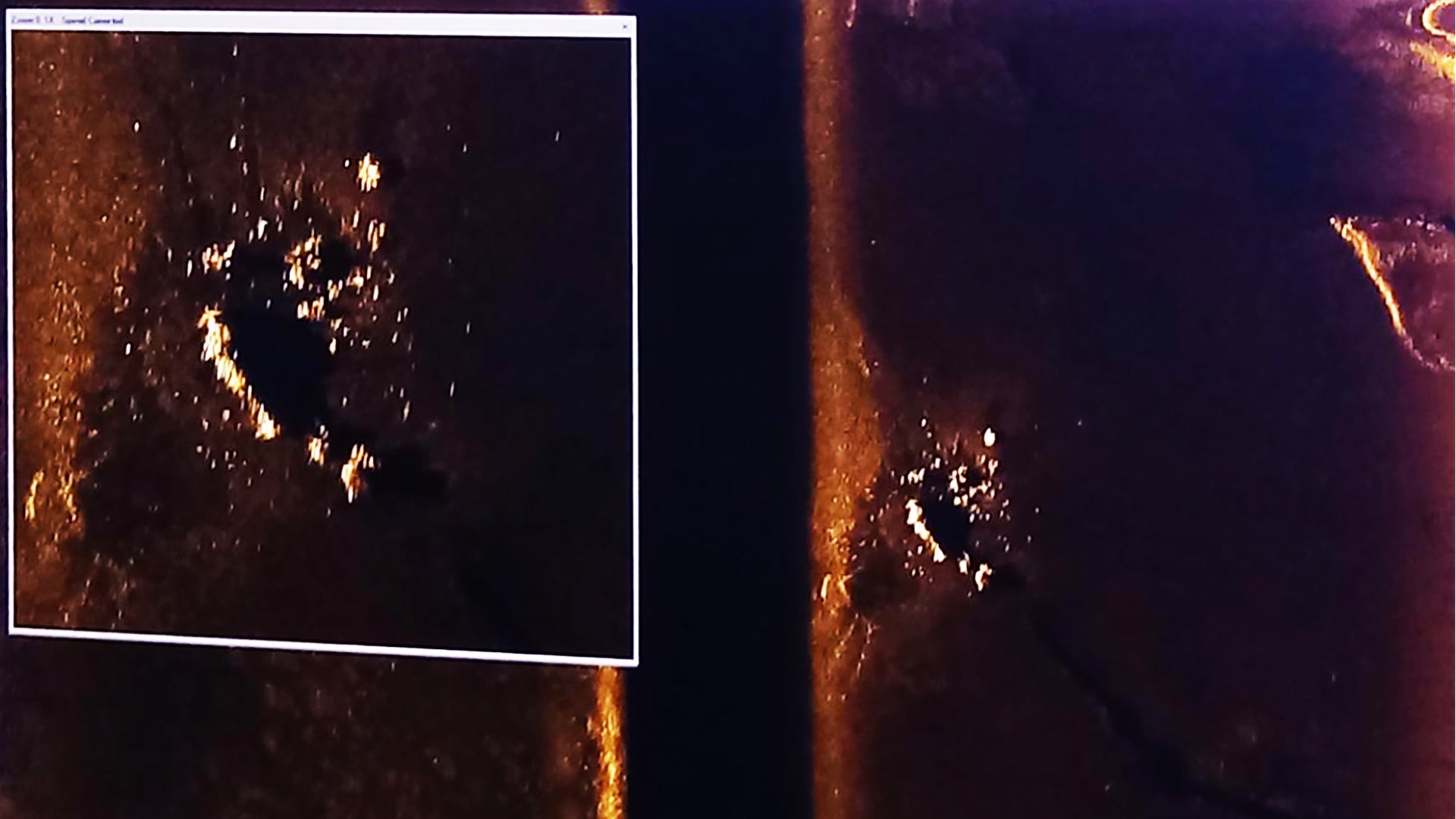Nearly one year to the day after the Armada Argentina lost contact with their Santa Cruz class diesel-electric submarine ARA San Juan, they have announced that its broken hull has been finally discovered laying 2,620ft below the surface of the Atlantic Ocean.
Although the big multi-national search for the submarine ended many months ago, a U.S. company named Ocean Infinity that specializes in mapping the seafloor has been contracted since late Summer to continue looking for submarine using its advanced side-scanning sonar and other technologies.
The hit it received from the seafloor was remarkably detailed, showing an elongated and broken object that measures roughly 60 meters in length—the submarine was 67 meters overall when it was intact—making it a very promising discovery. Remotely operated vehicles (ROVs) have been sent down to inspect the object of interest and the Argentine Navy has confirmed that it is indeed ARA San Juan.
The revelation is part amazing and part bittersweet. On one hand, finding the submarine on the seafloor—the proverbial needle in a haystack—a year after it went missing is an awesome accomplishment. On the other hand, although it will bring much-needed closure to the 44 sailors’ families who have endured a nightmare of an ordeal over the past 12 months, it will also be an incredibly sad reality to face.
San Juan disappeared on November 15th, 2017 after reporting a short circuit issue with its batteries to its Argentine Navy masters while on a patrol in the south Atlantic. According to the BBC, an Argentine Navy spokesman described the cause of the malfunction as such:
“Navy spokesman Enrique Balbi told reporters last year that water had entered the submarine’s snorkel, which can be used to take in air from above the surface when the submarine is submerged.
The saltwater dripped on to a battery tray in the prow, causing the battery to short circuit and to smolder, he said. The sub had reported the fault and had been ordered back to base but then disappeared.”
At the time of the call, the captain noted that the submarine’s crew was in fine condition and that they were returning to Mar Del Plata Naval Base located in Northern Argentina to deal with the problem. The sub’s previous port of call was Ushuaia Naval Base located near the southern tip of the country.

Not long after its disappearance, listening posts ran by an NGO that monitors for nuclear weapons tests picked up a loud anomaly that is thought to have been San Juan’s hull imploding. The approximate location of the anomaly was 30 miles north of its last known position.
The entire event has played out on a world stage and has put a focus on the readiness and reliability of Argentina’s tiny and aging submarine force. Now that the wreck of the San Juan has been found, some sort of recovery operation will no doubt be executed. Hopefully, more facts about the events leading up to the submarine’s disappearance can be gained from it.
We will continue to update this post throughout the day as more information on this important discovery comes to light.
Update: 10:30am PST—
Here are some of the images from the ROV that helped identify the wreck as ARA San Juan:
Although the San Juan is relatively intact, Argentine Navy officials stated that it was totally clear that the submarine imploded. Debris from the implosion are scattered around the seafloor over a 70-meter wide area.
The area where the wreck was found has extreme topography making it hard to find the wreck. Apparently, it was surveyed twice already over the last year before Ocean Infinity found it.
Contact the author: Tyler@thedrive.com
